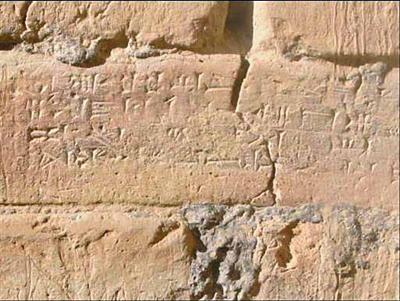What if elements within a traditional method of assembly began to re comprise defined roles within each piece? Most notably, what if the individual piece also held within it enough information to describe the process of assembly? The process for construction could be held within individual “pieces” and contributes to direct assembly with adjoining pieces. Two adjacent steps trigger the piece to become part of the assemblage, how it’s acted upon and then at what point it triggers the next piece for assembly to take over, informs the steps of assembly.

This idea already has ancient precedent found in the ruins of Babylon; the brick are literally inscribed with information on how the wall and whole temple is to be built. Not only could it have informed assembly, but it could inform reassembly if the temple fell into ruin in the future.
From Oxford Art Online:
Nebuchadnezzar had inscribed bricks identifying his temples and palaces inserted into their walls and also left inscribed clay tablets urging his successors to rebuild them. During the late 20th-century war with Iran, the Iraqi President Saddam Hussein, following the instructions of the ancient king, ordered a major reconstruction of the ‘Southern Palace’ according to designs by Koldewey and Andrae (although some archaeologists argued that these were dated). Work on the reconstruction began in 1987 and was scheduled for completion in September 1990.